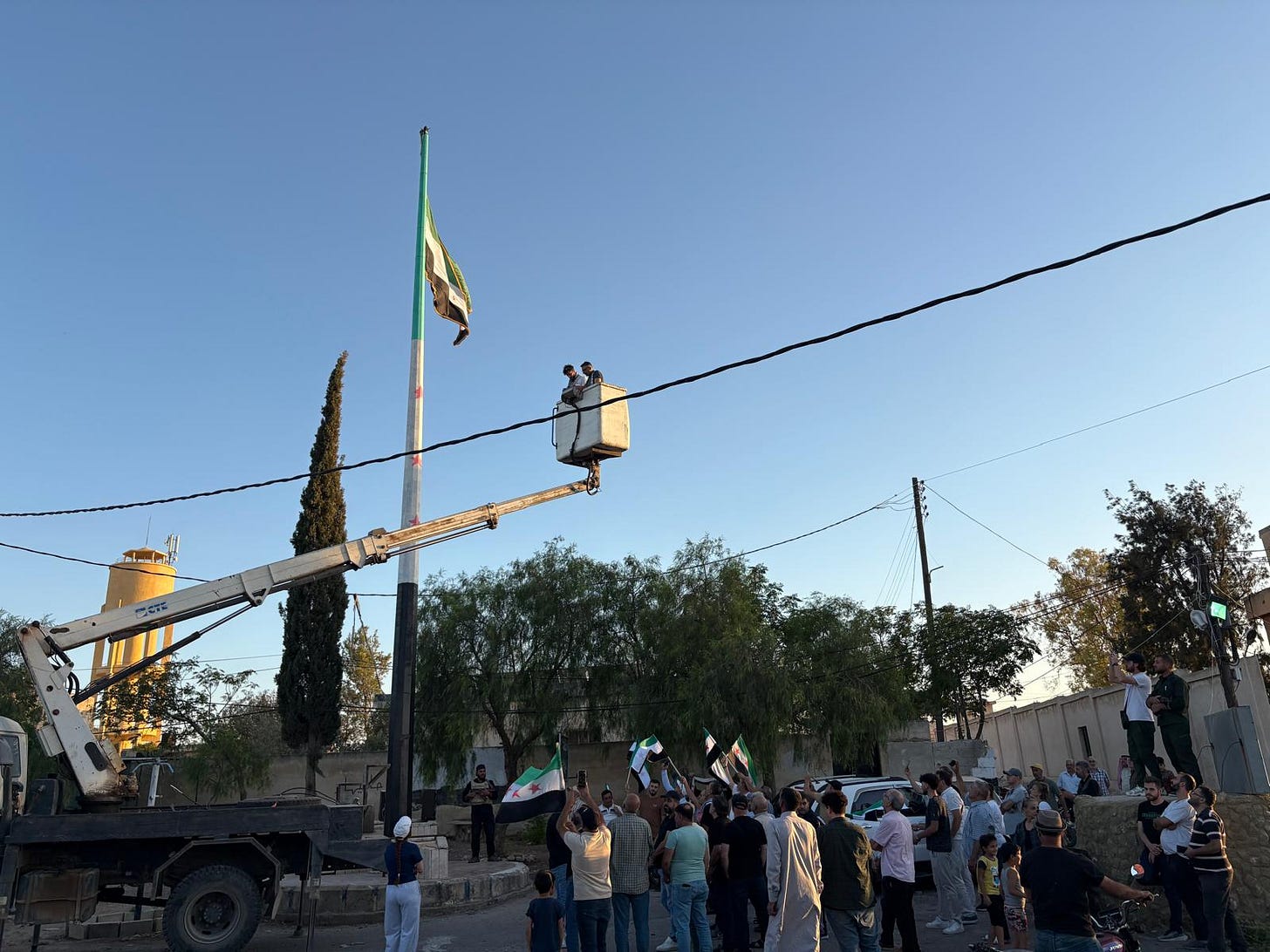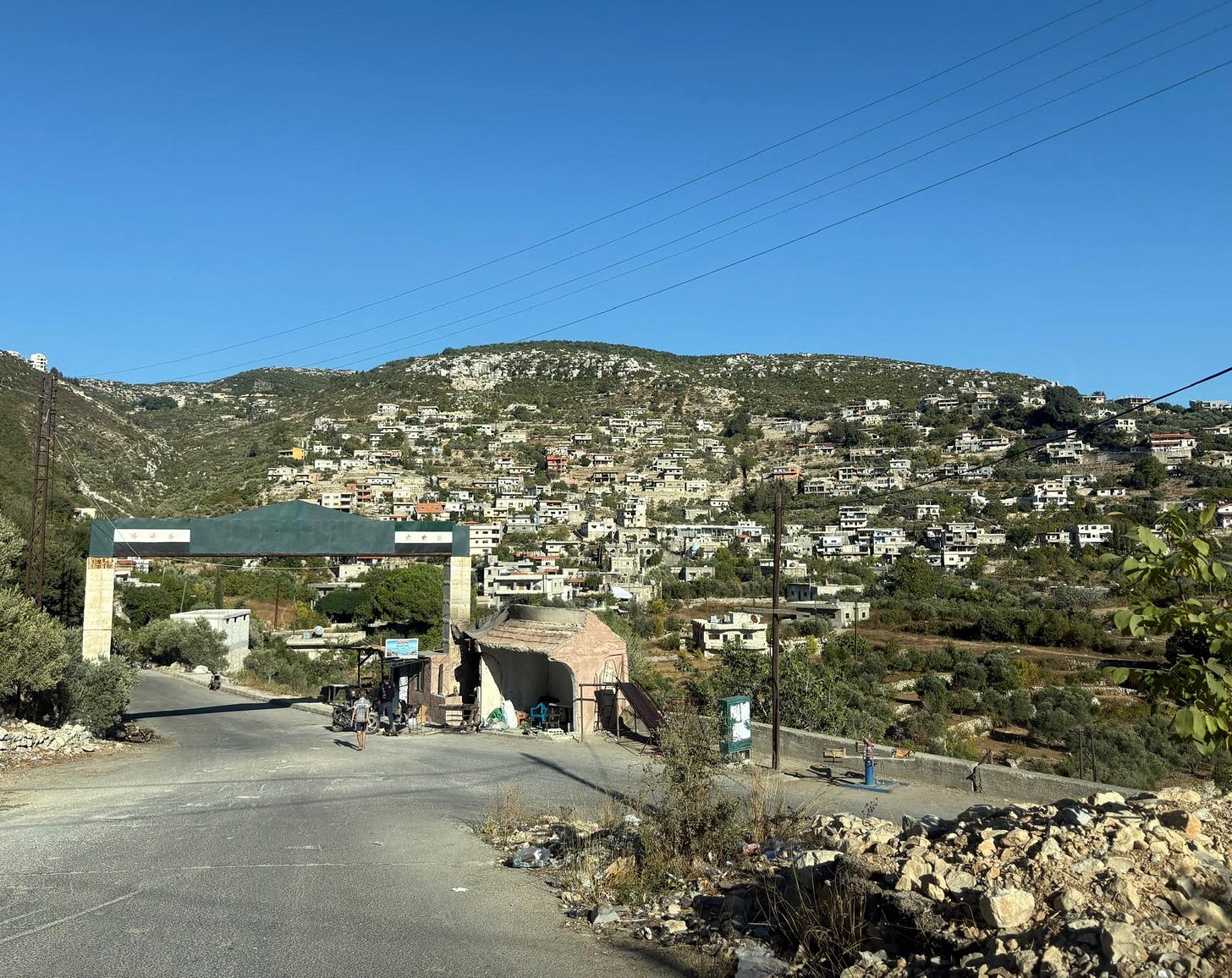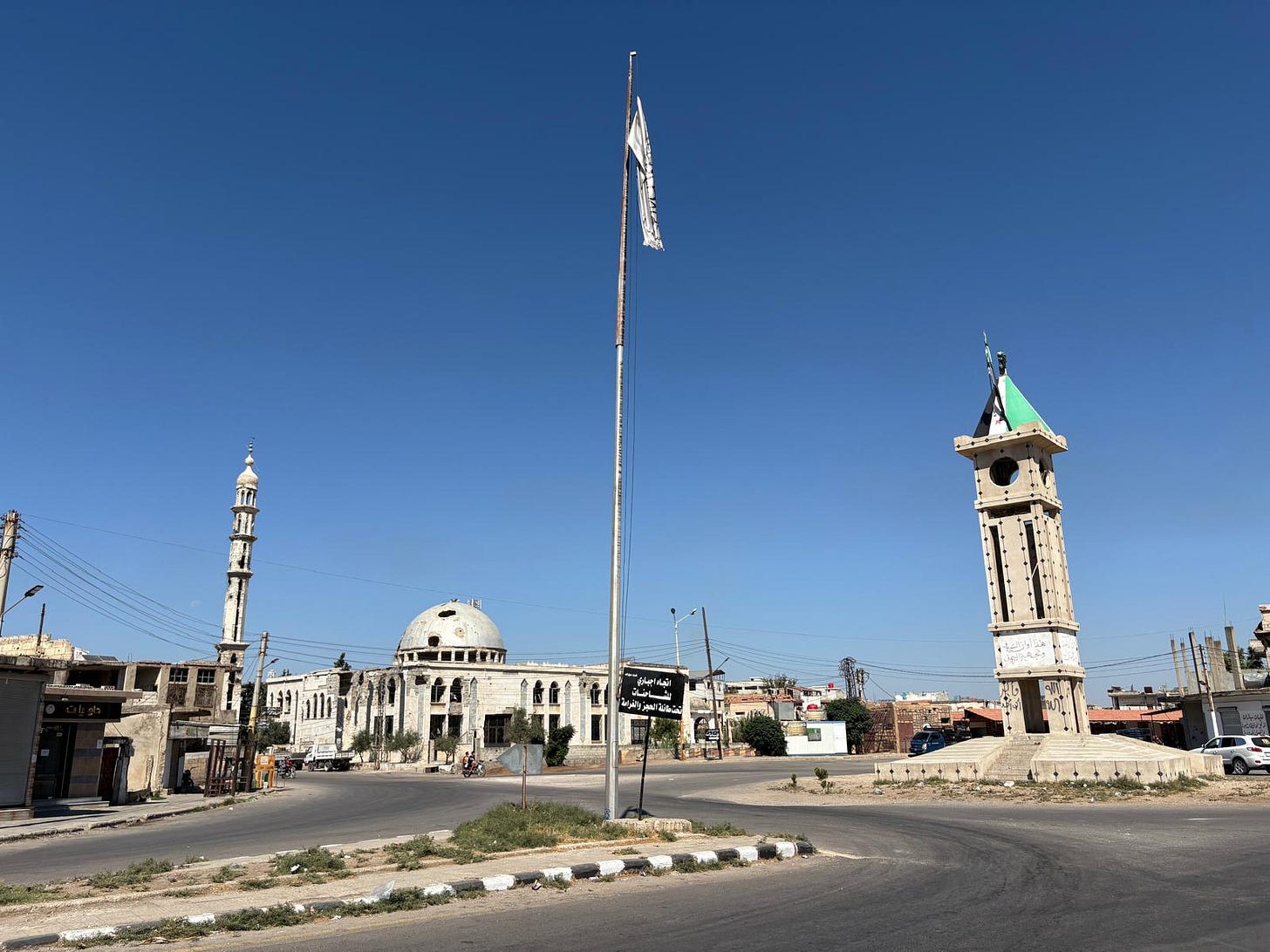A New Syria Starts to Take Shape
Continued improvements and new concerns, reflections from the field
I just returned from another two weeks of interviews in western Syria in what may have been my most complex trip since the fall of Assad. I visited some new places and old, across Damascus City, Homs, rural Hama, and the coast. The topics discussed were the usual: security developments, local governance, and civil peace initiatives. But the responses - from officials, activists, and regular people - were more complex than in the past. Trends are harder to identify now, and while there are clear improvements in some areas, new concerns not previously voiced have also arisen.

Ongoing Security Improvements
The government has continued to build on the the security improvements I noted following my trip two months ago. While in July there were still serious, institutional problems in places like Baniyas and rural Jableh, these issues had largely been resolved by my next visit in September. Activists in Baniyas reported a gradual return to commercial life in the Alawi areas of the city, as security forces have become more disciplined and cases of random harassment have decreased. In rural Jableh, those military units which had for months frightened and harassed locals have been replaced.
Relatedly, the Ministry of Interior (MoI) continues to expand its presence outside of urban centers, replacing many military checkpoints just outside of cities with MoI checkpoints. This includes the gradual introduction of the new “Road Security Directorate”, an evolution of the old Idlib Checkpoint Authority, which will theoretically eventually take over all rural road checkpoints currently manned by army units.
The MoI has also shifted in recent months from an emphasis on mass recruitment to an emphasis on training. Several new training systems have been introduced that are designed to take already-hired MoI members and improve their competency and professionalism. This includes domestic and international training programs supported by allied countries.
The Ministry of Defense has also shown a clear effort to consolidate checkpoints in rural areas under singular units, solidifying the chain of command and easing the work of local officials to deal with any violations committed by checkpoint personnel. New positions have also been introduced within local MoI offices to better facilitate communication between MoI security officials (in charge of each district) and the commanders of MoD units deployed in those districts. All of these structural changes come with sustained internal accountability (of which I was provided many examples both by officials and activists). However, the government continues to not publicly discuss the bulk of these arrests and internal disciplinary actions, harming its credibility.
Despite these ongoing improvements, fear remains rampant in many Alawi communities. A common refrain I heard across the coast was “there are no security problems here, but we see what is happening in other places on social media.” Whenever large General Security convoys depart from cities, social media lights up with rumors of impending raids and killings. Local media activists and Alawi mayors serve as crucial intermediaries in these cases, quickly communicating with security officials about the purpose of the convoys and then relaying that information to their communities in order to clam them down. However, these communication networks do not exist everywhere.
The major security problems now stem from two factors. The first is from poor-performing local security officials who are not enforcing discipline among their rank and file. It is clear, after extensive discussions with both local MoI officials and activists across many regions, that these local officials have a significant amount of influence over the behavior of their forces. Many officials have identified and implemented effective internal policies and civilian-engagement policies - now these need to be enforced across all districts.
The second factor is inter-communal conflict. This is now the dominating trigger for sectarian violence in Syria, and can be seen in this past week’s bout of killings and kidnappings in Hama. Every Alawi activist I spoke with said that there are no longer any specific areas which can be said to have continuous problems. Instead, security issues over the past several months have taken the shape of sporadic, individual incidents across the country. These are often triggered by inter-communal issues that either go unaddressed or which civil peace systems are unable to resolve before they spiral. In some places, these conflicts largely revolve around housing and property disputes, in others it is unchecked cycles of revenge.

Civil Society’s Precarious Space
The best systems for preventing disputes from spiraling into wider violence involve close coordination between security officials and locals. These can take the form of Civil Peace Committees, Reconciliation Committees, or unnamed, looser structures involving religious figures and social elites working as intermediaries between the community and officials. Where these systems exist, trust between minorities and the government is slowly being built, and disputes and violations by security forces or by locals are quickly resolved.
However, these systems are not ubiquitous, relying heavily on local security and political officials’ openness to the work of civil society organizations. Here the unclear role of the Political Affairs Directorate looms large. In some governorates, the Political Affairs Directorate is actively undermining inter-faith civil society organizations - including intimidating members and outright banning some of their work. Yet in other governorates, the office has either turned a blind eye to local civil society movements, works in a supportive capacity with them, or maintains a strained, but so far largely hands-off, relationship.
Inter-faith, and particularly Alawi-driven, CSOs seem to be the most heavily targeted, but it must be noted that even here the treatment is not homogenous. Inter-faith organizations in Tartous are severely limited in their work, while those in Homs and Hama are able to regularly organize and host activities. It seems that Damascus has not decided yet what stance it will take on CSOs more broadly, but especially those that it views as engaging in security issues.
Damascus would do well to consider the value of CSOs in supporting the work of local security officials, especially in heavily minority areas. Many proactive, well-meaning officials continue to stress the difficulty they face in engaging with and building trust in their respective communities. Civil society organizations can, and do, play a critical role as intermediaries - when they are allowed to freely operate. This issue of CSO freedom and local civil peace structures is, in my opinion, the pressing issue for the Syrian state today.
Economic Stagnation
Syria’s economy remains shattered, despite the millions of dollars of business deals signed in Damascus in recent months. Jobs are non-existent - even for highly skilled people with college degrees - and prices in some cities, especially Damascus, have skyrocketed. Many IDPs have returned back to the camps along the Turkish border, where they have access to NGO aid, and many refugees abroad have reported an unwillingness to return to Syria in its current economic state. Others are seeking ways back into Turkey after months of being unable to find work.
These issues persist across the country, but they are particularly felt in the coast. In the Alawi villages here there was never a functioning economy. These rural areas could only sustain their populations because, in most cases, more than half of all men left to serve in the regime’s military and security forces. These men have been jobless since the collapse of their army on December 8. Their towns’ and villages’ only local economy is farming, and that is suffering hugely under a years-long drought.
Some of these communities are too poor to even afford the bus tickets to Latakia or Tartous city, either to look for jobs there or to send their children to university. Water and agricultural projects, as well as skills training and basic education seminars, are crucial for all rural communities across Syria. But for the coast, particular consideration is now needed to determine how to build a real economy from scratch in an area that was never self-sustaining.
The economic crisis across the country has become a major pressure point on security. Kidnappings and robberies are integrally tied to the poor economic state, while the risk that ex-regime soldiers will turn to criminal or insurgent networks only grows the longer the remain unemployed and destitute.
President Sharaa seems to understand this. On September 17 he held a two-hour interview with myself and nine other researchers and journalists. At the end of the interview, he gave a short speech in which he emphasized repeatedly that economic development is the key to Syria’s future and the main means by which social conflicts will be resolved. Syria’s allies should take heed of this vision. Diplomatic support for a stable and united Syria is important, but those efforts will inevitably fall apart if the international community does not also actively support the revitalization of Syria’s economy.




Very keen to hear about the interview with president Al Sharaa